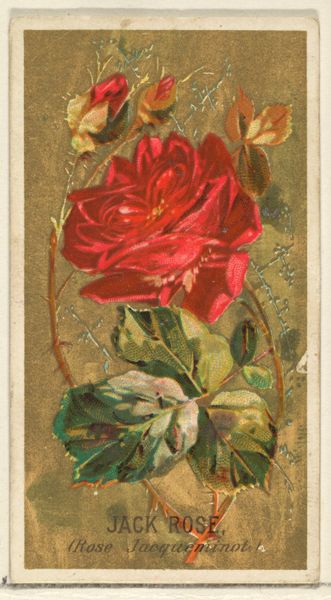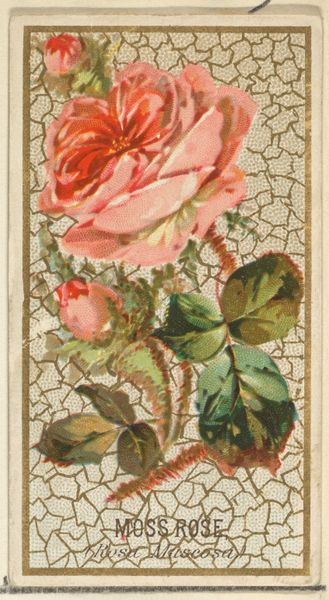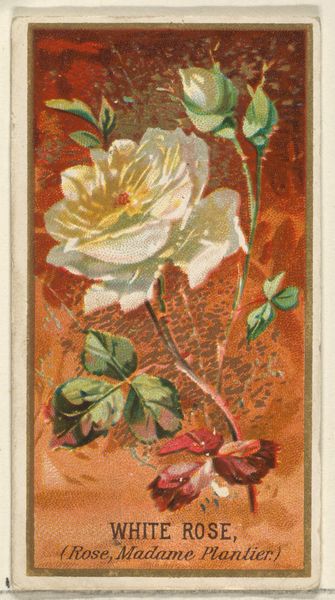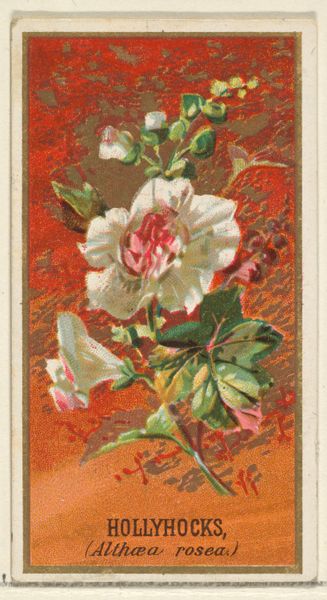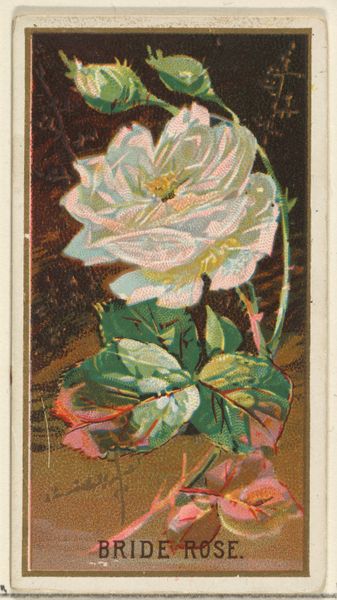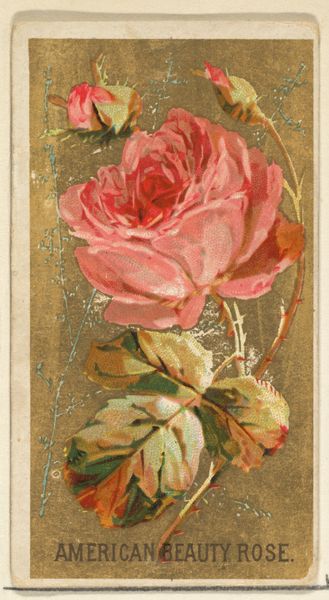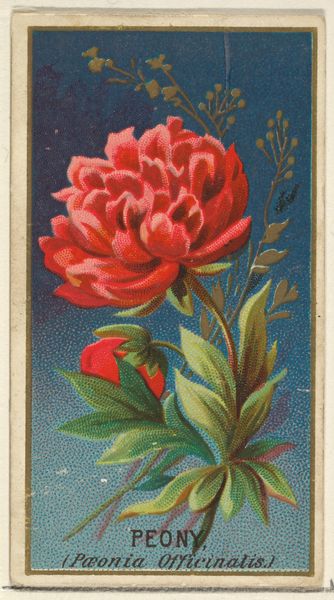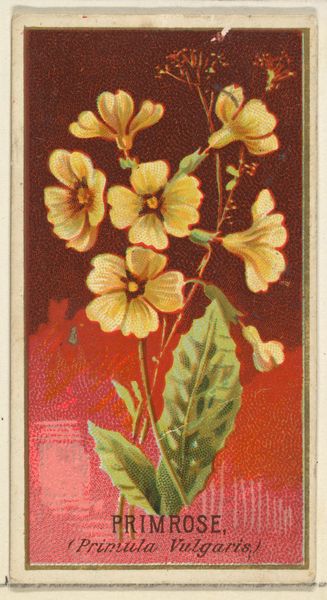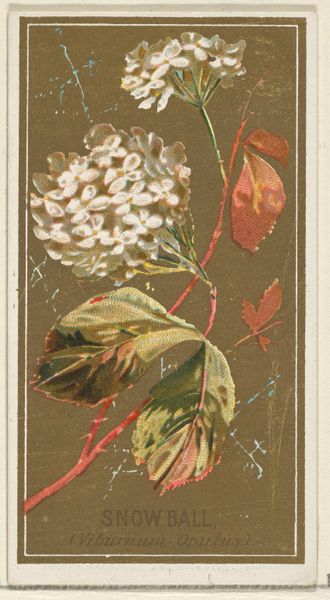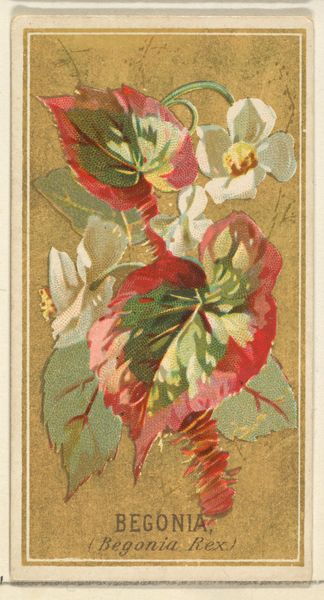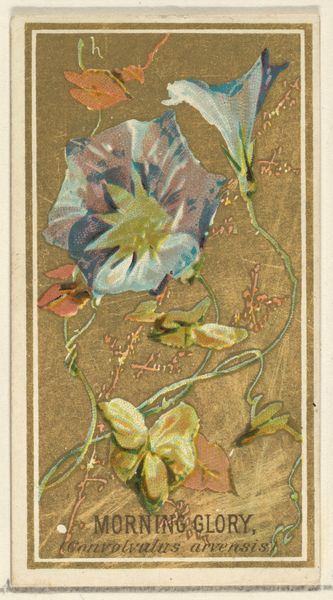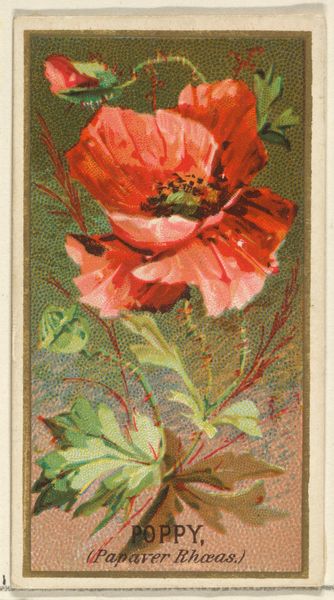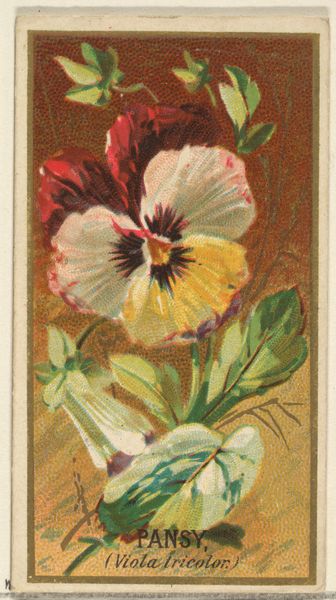
Pearl Rose (Perle des jardins), from the Flowers series for Old Judge Cigarettes 1890
0:00
0:00
# print
Dimensions: sheet: 2 3/4 x 1 1/2 in. (7 x 3.8 cm)
Copyright: Public Domain
Curator: It has a certain antique sweetness, wouldn't you say? The golden rose really pops against that subtly textured burgundy backdrop. Editor: Absolutely, and here we have "Pearl Rose (Perle des jardins)," a print produced around 1890 by Goodwin & Company, part of their "Flowers series" for Old Judge Cigarettes. These were collectible cards. Curator: Cigarettes and flowers, a curious juxtaposition! But given the cultural history of smoking, especially its association with sophisticated leisure, it’s not entirely surprising. This little print is very much a product of its time, part of the wider phenomenon of tobacco cards becoming a staple marketing tool. Editor: And the rose itself, deeply nestled in layers of meaning! We're not just seeing a flower, but centuries of coded language. Roses have been linked to love, beauty, and secrecy since antiquity. Yellow roses, specifically, historically symbolized jealousy or infidelity, though meanings evolve. Perhaps in this commercial context, it speaks of attainable luxury. Curator: Very astute. It’s fascinating how a small piece of promotional material reflects broader artistic trends. There's a distinct echo of Japonisme in the flat planes and cropped composition, very fashionable at the time and influencing graphic design. This makes this print fit well within art nouveau aesthetics of the period. Editor: Yes, the Ukiyo-e influence is undeniable! The simplification of form, that emphasis on line and color. Even the close-up perspective invites contemplation, encouraging us to appreciate the rose’s intricate structure. And the overall effect gives this a rather nostalgic feel. Curator: Nostalgia sold, quite literally. Think of the wider consumer culture taking shape. This small token contributed to the creation of desire, connecting luxury with fleeting pleasures and transforming ordinary items into aspirational objects. It is not necessarily just an image; it becomes an artifact of its period. Editor: In that respect, the card's very existence invites reflection. Not just about visual conventions, but the ever-shifting symbolism we imbue to everyday items, even something as fleeting as a promotional print included in cigarette packs. Curator: Indeed. It provides a tangible connection to a particular historical moment, a chance to contemplate how image, industry, and culture intertwined. Editor: Beautifully put! I think I shall go ponder what everyday items have gathered around my own deep-seated desires!
Comments
No comments
Be the first to comment and join the conversation on the ultimate creative platform.
